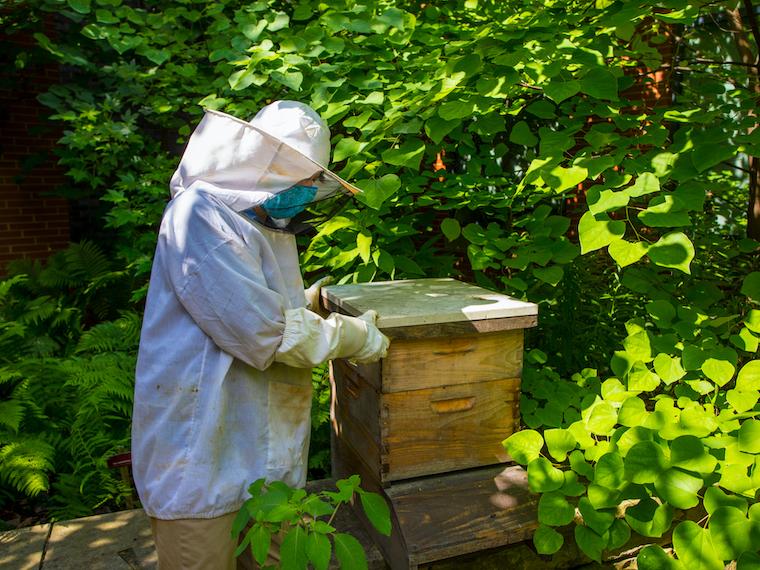Biology
Oberlin’s Teaching Garden
Oberlin’s pollinator garden is a vibrant living classroom for the biology department housed on the first floor of the Science Center.

Professor of Biology Mary Garvin, dressed in protective gear, surveys a nesting site for native species of solitary bees in preparation for her class of students.
Photo credit: Yvonne Gay
A large bank of two-story windows frame the pollinator garden. It’s designed to allow students and visitors to literally see conservation at work and gain an appreciation for the critical ecosystem services that flowering plants and their pollinators provide. Professor of Biology Mary Garvin is among the faculty members who care for the garden and use it for research and coursework.
The depth of the space can be difficult to gauge from the outside. However, once the door opens students and visitors alike take a narrow path that winds past several flower beds before opening up to birdhouses and ferns. The garden has some 50 species of plants and native hosts such as common milkweed, butterfly weed, and swamp weed. There are also nesting sites for native species of solitary bees and hives for European honey bees. Small water reservoirs are tucked under branches.
During the winter months when most of the plants and the bees are dormant, the pollinator garden remains active. Birds feed on the seeds and fruit that result from successful flower pollination. The birds also feed on bees that have died and have been removed from the hive by young worker bees.